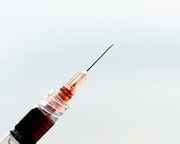Nursing homes and personal-care facilities present many health and safety risks for their employees. In fact, combined with patient violence against employees, the situation has become so serious that the Occupational Safety and Health Administration (OSHA) has made nursing homes a top priority for safety inspections.

With the U.S. population aging at an increasingly rapid rate, the nursing home industry is one of the fastest-growing in the country. Residential-care facilities, including nursing homes, employ nearly three million workers, many of whom are required to perform physically demanding and often dangerous tasks on a daily basis.
In a routine day, for example, employees have to help residents perform such routine activities as bathe, dress and walk. In addition, they are often called on to manually lift and reposition residents, provide them with physical therapy and prepare and administer medications that may present hazards.
As an employer, it's in your best interest to make your nursing home safer. Finding ways to lessen health and safety risks will help your business by lowering employee turnover, reducing absenteeism and trimming workers' compensation costs. Moreover, you have a legal obligation to provide a safe work environment for staff members under the Occupational Safety and Health Act.
A more secure work environment also increases productivity and morale. So here is a list of some of the most common hazards and suggestions for correcting them.
Health Hazards
Handling of patients. OSHA recommends minimizing, and eliminating when possible, all manual lifting of patients. Instead, the agency recommends providing employees with assist devices and equipment and training them in proper body positioning techniques when a patient must be manually moved.
Dealing with needlesticks and other sharps-related injuries. To help avoid exposure to infections, nursing home staff should be properly trained in the handling and disposal of needles and other sharp instruments such as glass or plastic pipettes, knives, razor blades and the like. Possible solutions include using safer needles or drug-administering devices that don't use needles.
Preparing and administering medications. Employees are often exposed to hazardous drugs through the skin, mouth or by inhalation. Your nursing home should have a written safety policy for employees that handle or are exposed to chemicals and drugs. The policy should meet the requirements of the Hazard Communication Standard.
Safety Hazards
Slips and falls: It's easy to fall and and be injured on slippery surfaces. Maintenance crews should use no-skid waxes and grit-coated surfaces in areas likely to have wet floors, such as shower and bathing areas. Provide floor plugs so power cords don't run across pathways and be sure to place warning signs around wet floor areas.
Electric Shocks. Train employees to avoid plugging or unplugging electrical equipment when hands are wet. Since water conducts electricity, all electrical service near sources of water must be properly grounded. Repair all receptacles and portable electrical equipment as soon as they are damaged or show signs of wear. Watch for overloaded receptacles and faulty wiring, which can cause shocks and fires.
Burns: Employees must be trained to avoid and watch for fire hazards when they work with or near heat-producing equipment and flammable chemicals. Ensure that your facility's maintenance and safety personnel keep a close eye on and control the accumulation of combustible materials. Employees should be trained in using fire extinguishers. Designate staff members to take on the responsibility of directing and controlling an evacuation in the event of a fire or other threat to the facility.
You can find more information about health and safety risks at nursing homes and how to correct them on the OSHA website.
(For more information on nursing home staff hazards, click here for our previous article on violence prevention programs.)



